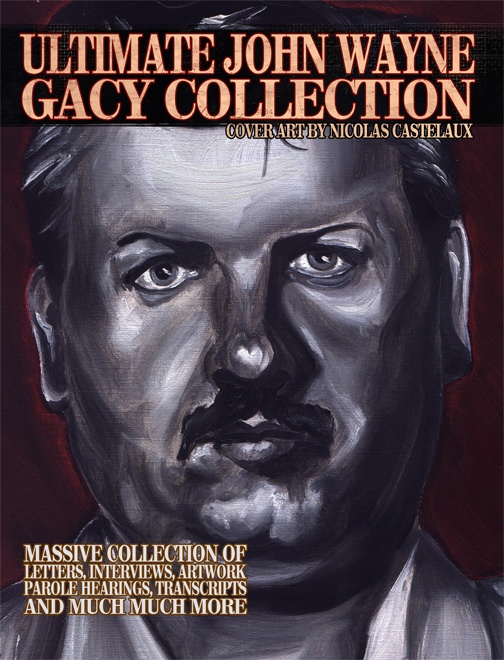Martha MAREK

Classification: Serial killer
Characteristics: Poisoner - To collect insurance money - To inherit
Number of victims: 4
Date of murders: 1932 - 1937
Date of arrest: 1938
Date of birth: 1904
Victims profile: Emil Marek (her husband) / Ingeborg Marek (her daughter) / Suzanne Lowenstein (an elderly relative, whose money and house she inherited) / Felicitas Kittsteiner (a lodger in her house)
Method of murder: Poisoning (thallium)
Location: Vienna, Austria
Status: Executed by guillotine in Vienna on December 6, 1938
Martha Lowenstein Marek was guillotined by the Bavarian State executioner, Johann Reichhart, in Vienna on the 6th of December 1938, for the poisoning of her husband, their baby daughter, an elderly relative, whose money and house she inherited, and finally a lodger in her house.
Emil Marek had conspired with his wife Martha to defraud his insurers by getting Martha to chop off his leg in order that they could collect $30,000 in accident insurance he had taken out. Martha, however, was not very good at wielding the axe and it took 3 blows to sever the leg. The insurer's doctors were not convinced that it was an accident that had occurred while cutting down a tree as the Mareks claimed and therefore rejected their claim.
Emil died, apparently from tuberculosis, in July 1932 and their 9 month old baby daughter died a month later. When her lodger Felicitas Kittsteiner died, his relatives became suspicious because he had told them that when he ate or drank anything that Martha prepared, he immediately felt violently sick. Martha had taken out a life insurance policy on him before he died.
The relatives informed the police who ordered the exhumation of all 4 bodies. They found that they had all been poisoned with a compound of thallium. She was arrested and brought to trial in Vienna in 1938.
Hitler had re-instated capital punishment in Austria when he took control of it and a new guillotine was sent to Vienna by rail, packed as "industrial machinery" on October 3rd, 1938. As you read earlier, it was to see plenty of use. No woman had been executed in Austria for over 30 years and there was some reluctance on the part of the authorities to execute Martha.
Martha was alleged to be paralysed so it was decided to take her from the condemned cell to the execution chamber in a wheelchair. The executioner, Johann Reichhart, and his assistants practised tipping the wheelchair in front of the guillotine so that Martha would fall directly onto the bench in the right place.
On the morning of the execution, however, Martha's paralysis seemed to have disappeared and she struggled violently with her guards and was able to land a heavy kick on Reichhart before being subdued and tied to the bascule by his assistant. Reichhart executed 3,165 people between 1924 and 1947.
Many British accounts of Martha Marek state that she was beheaded with an axe but this is not correct and may well stem from an incorrect translation of the German for guillotine -Fallbeil- literally drop or fall hatchet (axe).
Martha Lowenstein Marek was guillotined by the Bavarian State executioner, Johann Reichhart, in Vienna on the 6th of December 1938, for the poisoning of her husband, their baby daughter, an elderly relative, whose money and house she inherited, and finally a lodger in her house. Emil Marek had conspired with his wife Martha to defraud his insurers by getting Martha to chop off his leg in order that they could collect $30,000 in accident insurance he had taken out. Martha, however, was not very good at wielding the axe and it took 3 blows to sever the leg. The insurer's doctors were not convinced that it was an accident that had occurred while cutting down a tree as the Mareks claimed and therefore rejected their claim. Emil died, apparently from tuberculosis, in July 1932 and their 9 month old baby daughter died a month later. When her lodger Felicitas Kittsteiner died, his relatives became suspicious because he had told them that when he ate or drank anything that Martha prepared, he immediately felt violently sick. Martha had taken out a life insurance policy on him before he died. The relatives informed the police who ordered the exhumation of all 4 bodies. They found that they had all been poisoned with a compound of thallium. She was arrested and brought to trial in Vienna in 1938. Hitler had re-instated capital punishment in Austria when he took control of it and a new guillotine was sent to Vienna by rail, packed as "industrial machinery" on October 3rd, 1938. As you read earlier, it was to see plenty of use. No woman had been executed in Austria for over 30 years and there was some reluctance on the part of the authorities to execute Martha. Martha was alleged to be paralysed so it was decided to take her from the condemned cell to the execution chamber in a wheelchair. The executioner, Johann Reichhart, and his assistants practised tipping the wheelchair in front of the guillotine so that Martha would fall directly onto the bench in the right place. On the morning of the execution, however, Martha's paralysis seemed to have disappeared and she struggled violently with her guards and was able to land a heavy kick on Reichhart before being subdued and tied to the bascule by his assistant. Reichhart executed 3,165 people between 1924 and 1947. Many British accounts of Martha Marek state that she was beheaded with an axe but this is not correct and may well stem from an incorrect translation of the German for guillotine -Fallbeil- literally drop or fall hatchet (axe). MAREK, Martha (Austria) Marrying Martha Lowenstein cost young Emil Marek an arm and a leg – well, a leg anyway, and later his life and that of his baby daughter. It all started when Emil, a young engineering student, met 20-year-old Martha. She was quite wealthy, having some years earlier met Moritz Fritsch, a rich dress shop owner, who enjoyed her company so much that he made her his ward and in order to give her a good upper-class education, sent her to finishing schools for young ladies in England and France. When she returned she lived with Moritz, but then, in 1924, she met and fell in love with Emil. Fortune smiled on them, and a fortune came their way, for her elderly benefactor died and left her his estate and all his money. The young lovers promptly married and wasted little time in squandering the assets on the good things in life. Eventually funds ran low, so low in fact that they concocted a plan which, although it entailed a sacrifice on Emil’s part, would bring them a large amount of cash. The first step was for Martha to take out a £10,000 policy insuring Emil against accidents. This would be followed, some weeks afterwards, by the young man losing a leg while using an axe to cut down a tree; except that it would happen not when Emil was wielding the axe accidentally – but when Martha was wielding it on purpose! One can only conjecture the mentality of a woman who could deliberately aim a blow with an axe at someone’s leg, not just once, doubtless because it only caused a flesh wound, but then strike twice more until the limb was so badly mutilated that a surgeon had to amputate it below the knee. In his subsequent clinical write-up, the medical man reported his findings: that the injury was caused not by one, but three separate blows, and the angles of the wounds were inconsistent with being struck by the alleged holder of the axe. At that, Martha, seeing the prospects of the £10,000 rapidly slipping away, tried to bribe one of the surgeon’s assistants into testifying that he had seen the surgeon deliberately create the additional wounds at the instigation of the insurance company. This attempt failed, and the couple were sentenced to four months in gaol for bribery, Emil probably being excused hard labour while his drastically shortened leg was healing. As a result of the fraud, the insurance company charitably paid out only £3,000, which was rapidly dissipated by the legal costs the Mareks had incurred. They were once more in the poverty trap, made worse by the fact that by now they had two young children, but Martha pinned all her hopes on the life insurances she had taken out on her husband and offspring, one hope being realised when Emil suddenly died, the doctors diagnosing tuberculosis. The relatively small amount of insurance money she received was further increased when, only weeks later, their seven-year-old daughter Ingeborg also passed away. Her faith in the insurance system now fully restored, Martha became a companion to an aunt, Susanne Lowenstein, ingratiating herself in the old lady’s affections so much that when her relative died, as she soon did, Martha inherited all her aunt’s property, which consisted mainly of a well-furnished mansion. As much a spendthrift as ever, Martha spent what money had been left to her, then had no option but to rent out some of the rooms in the house, one of the lodgers being a Frau Kittenberger. It is hardly necessary to mention that Martha, as forward-looking as ever, took out a policy on her tenant’s life, nor that the lady died shortly afterwards. Perhaps Martha could have gone on insuring everyone she met and reaping the rewards without ever being detected, but she changed her tactics and instead insured the many valuable pictures in the house. She then sold many of them to art dealers and subsequently claimed to the insurers that they had been stolen. The insurance firm, by now suspicious, called in the police, whose success after circulating details of the paintings throughout the art world spelt the end for Martha Marek. Even worse was to follow, for further suspicions were now raised concerning the other insurance claims she had made; highly alarmed, the government authorised the exhumation not only of the lodger Frau Kittenberg, but also of Martha’s aunt Susanne Lowenstein, her daughter Ingeborg, and even her husband Emil. Post-mortems revealed that all had died of thallium poisoning, a soft, white, highly toxic metallic element which brought death, first by slow paralysis of the limbs and eventually of the internal organs. Any defence Martha may have made by accusing others of administering the thallium was nullified when the chemist who had sold her the poison was traced. On 6 December 1938 mass-murderer Martha Marek mounted the scaffold in Vienna and knelt over the block. She had insured her victims before they died, and the executioner ensured that his victim also died, achieving it much more accurately than she had done – with but one blow of the axe. Another pact between partners that went wrong involved Ginette Vidal and Gerard Osselin. Although both were married, with families of their own, in 1972 they fell in love and, settling down together in a little French town, they agreed that, to prove their devotion and loyalty towards each other, should either of them double-cross their artner, the betrayed one was entitled to kill the deceiver. Whether Gerard did not really believe in their pact, or thought he could get away with it, is not known, but when Ginette found a note written in Gerard’s wife’s handwriting, she did not hesitate; she shot him through the head. Ginette made no attempt to report what had happened; on the contrary she stayed in the house with her lover’s corpse, cooking for them both as if nothing had happened. Eventually Gerard’s family raised the alarm and the body was discovered by the gendarmes. When questioned, Ginette was surprised at their accusations; she explained she had acted in accordance with their agreement, and as evidence she produced the document each had signed. Unfortunately the visiting magistrate did not see it that way, and she went to prison for ten years. Amazing True Stories of Female Executions by Geoffrey Abbott






















